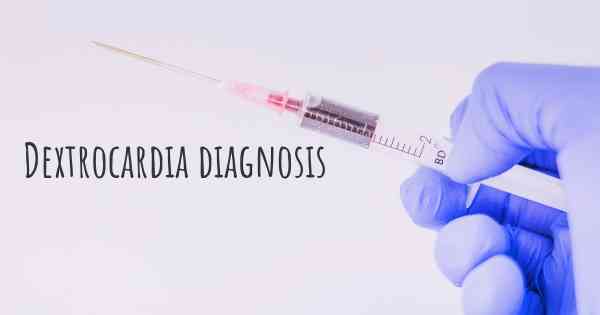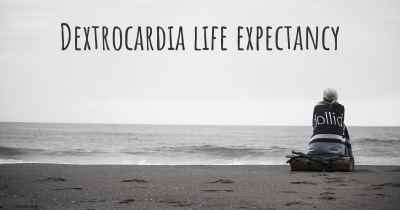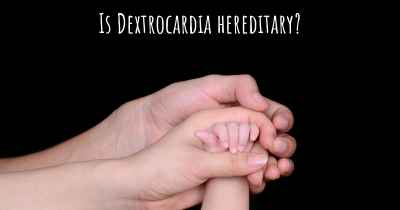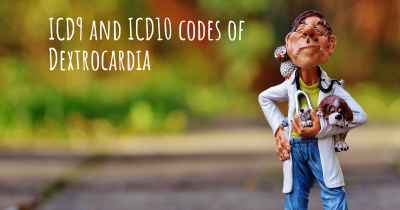How is Dextrocardia diagnosed?
See how Dextrocardia is diagnosed. Which specialists are essential to meet, what tests are needed and other useful information for the diagnosis of Dextrocardia

How is Dextrocardia Diagnosed?
Dextrocardia is a rare congenital condition in which the heart is positioned on the right side of the chest instead of the left. It can be associated with other heart defects or occur as an isolated anomaly. Diagnosing dextrocardia involves a combination of medical history, physical examination, and diagnostic tests.
Medical History
The first step in diagnosing dextrocardia is obtaining a detailed medical history. The healthcare provider will ask questions about the patient's symptoms, family history of heart conditions, and any other relevant information. It is important to provide accurate and comprehensive information to aid in the diagnosis.
Physical Examination
During a physical examination, the healthcare provider will carefully listen to the patient's heart sounds using a stethoscope. In dextrocardia, the heart sounds will be heard on the right side of the chest instead of the left. This abnormal positioning of the heart can be a clue to the presence of dextrocardia.
Additionally, the healthcare provider may observe any visible signs of dextrocardia, such as a shift in the location of the apex beat (the point where the heartbeat is most easily felt or heard). In dextrocardia, the apex beat may be felt on the right side of the chest rather than the left.
Electrocardiogram (ECG)
An electrocardiogram (ECG) is a non-invasive test that records the electrical activity of the heart. It is commonly used to diagnose various heart conditions, including dextrocardia. During an ECG, electrodes are placed on the patient's chest, arms, and legs to measure the electrical signals produced by the heart.
In dextrocardia, the ECG may show mirror-image reversal of the heart's electrical activity. The electrical axis of the heart will be shifted to the right side instead of the left. This abnormal ECG pattern can provide further evidence of dextrocardia.
Chest X-ray
A chest X-ray is a commonly performed imaging test that can help visualize the position and size of the heart. In dextrocardia, the X-ray will show the heart on the right side of the chest, opposite to its usual left-sided position.
Furthermore, a chest X-ray can also reveal any associated heart abnormalities that may be present in individuals with dextrocardia. These abnormalities can include ventricular septal defects (holes in the wall separating the heart chambers) or transposition of the great arteries (abnormal positioning of the major blood vessels).
Echocardiography
Echocardiography, also known as an echo, is a diagnostic test that uses sound waves to create real-time images of the heart. It provides detailed information about the structure and function of the heart, allowing healthcare providers to assess the presence of dextrocardia and any associated heart defects.
During an echocardiogram, a transducer is placed on the patient's chest, which emits sound waves that bounce off the heart structures. The echoes produced by these sound waves are then converted into images that can be viewed on a monitor.
In dextrocardia, the echocardiogram will clearly show the heart on the right side of the chest. It can also identify any associated heart abnormalities, such as abnormal heart chambers or valves.
Other Diagnostic Tests
In some cases, additional diagnostic tests may be necessary to confirm the diagnosis of dextrocardia or to evaluate associated conditions. These tests may include cardiac MRI (magnetic resonance imaging), cardiac CT (computed tomography), or cardiac catheterization.
Cardiac MRI and CT scans provide detailed images of the heart and blood vessels, allowing for a comprehensive evaluation of the heart's structure and function. Cardiac catheterization involves the insertion of a thin tube (catheter) into a blood vessel to directly visualize the heart and measure pressures within the heart chambers.
Conclusion
Diagnosing dextrocardia involves a combination of medical history, physical examination, and diagnostic tests. The medical history and physical examination can provide initial clues, while tests such as electrocardiogram, chest X-ray, and echocardiography are essential for confirming the diagnosis and assessing associated heart abnormalities. Additional tests may be required in certain cases to provide a more comprehensive evaluation. Early diagnosis of dextrocardia is crucial for appropriate management and treatment planning.








